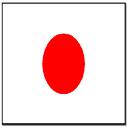Yahoo Answers is shutting down on May 4th, 2021 (Eastern Time) and beginning April 20th, 2021 (Eastern Time) the Yahoo Answers website will be in read-only mode. There will be no changes to other Yahoo properties or services, or your Yahoo account. You can find more information about the Yahoo Answers shutdown and how to download your data on this help page.
Trending News
how do you make traditional japanese dishes?
i want to try some traditional japanese foods
6 Answers
- DHKM97Lv 410 years agoFavorite Answer
do you really mean real traditional Japanese food, or you mean American-style/ non-japanese friendly Japanese food there is a big different
real stuff
natto
- http://www.bookmice.net/darkchilde/japan/japan/nat...
oden
- http://tastyislandhawaii.com/images06/oden600.jpg
buri kama
- http://2.bp.blogspot.com/_mX97kungFxQ/S0-zOjDGONI/...
Iwashi Shoyuyaki
- http://kyotofoodie.com/wp-content/uploads/2008/11/...
Mozuku
- http://japanesekitchen.files.wordpress.com/2009/10...
non-japanese friendly
Miso Ramen -- miso base soup
Shio Ramen -- salt base soup
Shoyu Ramen -- soy sauce base soup
Tonkotsu Ramen -- pork bone base soup
Yakisoba -- fried noodles
American-style Japan food
California roll or any form of "non-traditional" roll
teriyaki sauce - yes believe it or not most of the teriyaki sause in the market are fake, also
fish like yellowtail, marlin, skipjack tuna, salmon, trout, and mackerel are mainly used in Japan, while meat like chicken, pork, lamb and beef are find outside japan. In additional to that teriyaki are use as a sweet soy sauce marinade hence "tare" in Japanese. while teriyaki are use as a sauce outside Japan
- Japan AustraliaLv 71 decade ago
The secret to making good traditional Japanese food is getting the right pantry ingredients. From there you can create all the Japanese food you wish.
Read about the Essential Japanese Pantry Ingredients here
http://japan-australia.blogspot.com/2010/03/basic-...
Some of my favourite Japanese Recipes with the recipe link are:
Okonomiyaki (savoury pancake)
http://japan-australia.blogspot.com/2011/05/easy-t...
Yakisoba (Japanese stir-fry noodles)
http://japan-australia.blogspot.com/2011/04/easy-t...
Sukiyaki
http://japan-australia.blogspot.com/2011/03/easy-t...
Japanese Tempura
http://japan-australia.blogspot.com/2010/08/easy-j...
More great Japanese Recipes can be found here
Source(s): Japan Australia Blog http://japan-australia.blogspot.com/ - 1 decade ago
Japanese foods are so good! And so versatile. It would be hard for me to give you specific recipes right now but I can list down some traditional japanese foods that have been around for centuries, and are still popular today:
-sushi (foods on pieces of rice like fish, egg, beef, seafood, and veggies)
-chicken or pork karaage
-ramen (noodles in broth with meat and garnishes)
-yakisoba (fried noodles)
-teriyaki beef or chicken
-chicken katsu
-miso soup
-pork or chicken donburiya
-bento lunches (meat, rice, radish, veggies)
-tempura fish, shrimp, and veggies
-somen noodles (served cold)
-mochi (rice dessert)
-japanese style pastries
-sashimi (raw fish)
-kobe beef
-mochiko chicken
-furikake rice
These are popular japanese delicacies. But please look up these recipes. I promise they are great! For beginners, I recommend you try to cook shrimp and fish tempura, chicken or pork karaage, chicken teriyaki, and pork donburiya. They are so easy to make, you won't have any problems.
As for dessert, try to make a mochi, butter mochi is probably easiest to make. Add this with some sake or green tea, and you have yourself a feast.
Good luck, happy eating!
Source(s): Japanese food fanatic - 1 decade ago
Immerse yourself in Japanese culture, through books, materials, and if feasible, travel. :)
Go to the source itself.
Perhaps there is a Japanese cooking school in your area, with Japanese instructors.
- How do you think about the answers? You can sign in to vote the answer.
- 1 decade ago
Japanese food is all about precision cutting and good presentation.
Try the following website: http://www.theblackmoon.com/Jfood/food1.html
- Trish ThomasLv 71 decade ago
Japanese noodle bowl:
2 (14.5-ounce) cans reduced sodium chicken broth
1/4 cup reduced sodium soy sauce
1 teaspoon chopped garlic
1/4-inch piece peeled fresh ginger, finely chopped
1/2 pound noodles reserved from the Hibachi Steak recipe
2 cups reserved steak and vegetables from Hibachi Steak recipe
1 scallion, sliced
In a saucepan over medium heat, add the chicken broth, soy sauce, garlic, and ginger and bring it to a simmer. Add the noodles and cook for 1 minute. Add the beef and vegetables and cook for another 2 minutes. Divide the noodle mixture between 2 bowls and serve hot, garnished with the sliced scallion.
Sushi rice:
2 cups sushi or short grain rice
2 cups water, plus extra for rinsing rice
2 tablespoons rice vinegar
2 tablespoons sugar
1 tablespoon kosher salt
Place the rice into a mixing bowl and cover with cool water. Swirl the rice in the water, pour off and repeat 2 to 3 times or until the water is clear.
Place the rice and 2 cups of water into a medium saucepan and place over high heat. Bring to a boil, uncovered. Once it begins to boil, reduce the heat to the lowest setting and cover. Cook for 15 minutes. Remove from the heat and let stand, covered, for 10 minutes.
Combine the rice vinegar, sugar and salt in a small bowl and heat in the microwave on high for 30 to 45 seconds. Transfer the rice into a large wooden or glass mixing bowl and add the vinegar mixture. Fold thoroughly to combine and coat each grain of rice with the mixture. Allow to cool to room temperature before using to make sushi or sashimi





